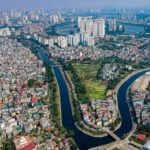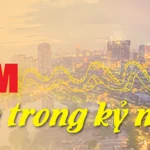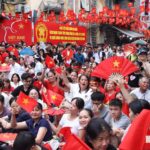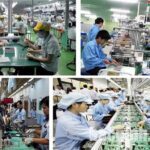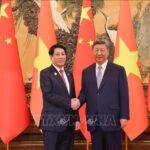
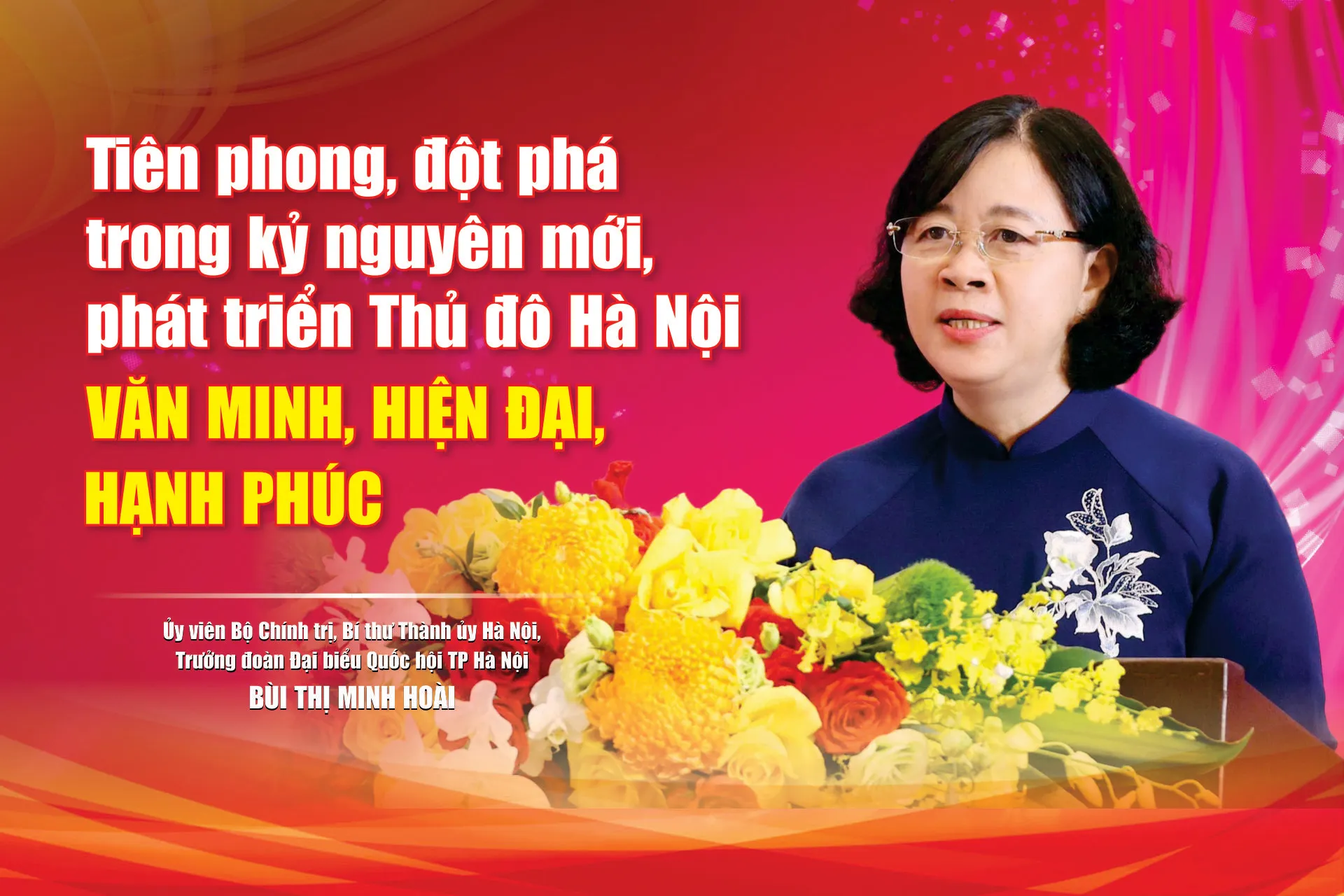
Hanoi is not only the national center but also the pioneering flagbearer for innovation, where Vietnam’s aspirations for strength, prosperity, and happiness originate. In this special context, the 18th Congress of the Hanoi City Party Committee, held from October 15-17, 2025, is a major political event for the Party organization, government, armed forces, and people of the Capital. With the motto “Unity – Democracy – Discipline – Breakthrough – Development,” the Congress is determined to promote the thousand-year tradition of civilization and heroism; unite to build a clean and strong Party organization; pioneer breakthroughs in the new era; build a civilized, modern, and happy Capital; and make important contributions to successfully achieving the country’s two 100-year goals.

After 80 years since national independence (1945-2025), 71 years since the Liberation of the Capital Day (October 10, 1954 – October 10, 2025), and nearly 40 years of implementing the Renovation process (1986-2025), under the leadership of the Party, the Capital Hanoi has persistently and determinedly built and developed, becoming the national political-administrative center, the heart of the country, a major center for economy, culture, education-training, science-technology, and international integration. In this glorious journey, the 17th Congress term of the City Party Committee made important contributions. Facing greater difficulties and challenges than forecast, the Party organization, government, armed forces, and people of the Capital promoted unity, mettle, intelligence, and creativity to successfully implement the Resolution of the 17th Congress with 10 working programs, 5 key tasks, and 3 breakthrough areas; achieving comprehensive and positive results; completing 16/20 targets set by the 17th Congress Resolution, including 4 targets exceeding the plan, completed 1 to 2 years ahead of schedule, contributing to creating new position and strength for the Capital to steadily advance in the nation’s rising era.
Building a clean and strong Capital Party organization means consolidating the roots of trust – because the strength of the Capital begins with the people’s hearts and the Party’s will. During the term, the work of building the Party organization and political system saw many innovations and creativity suitable to the characteristics of the Capital. Political, ideological, and ethical work ensured substance linked with responsibility commitments, building integrity qualities and service spirit. Mass mobilization work saw many innovations clearly demonstrating the “people are the roots” viewpoint with thousands of “skillful mass mobilization” models. Cadre work was innovated towards building a database on the workforce, arranging according to the motto “for the job, find the person,” “for the job arrange the person,” using products, efficiency, and people’s satisfaction as measures to evaluate cadres. Hanoi not only exceeded the target for developing new party members but also led in developing party members who are students – the “red seeds” rich in knowledge, future masters of the country. Inspection and supervision work was strengthened, promptly inspecting, reviewing, and strictly handling party organizations and members related to complex, prolonged cases assigned by the Central Committee. Internal affairs work, prevention and combat of corruption, waste, and negativity ensured “non-stop, non-rest,” “no forbidden zones, no exceptions.” By August 22, 2025, Hanoi had completed organizing congresses for 136/136 higher-level party organizations for the 2025-2030 term (including 10 directly affiliated party organizations and 126 commune/ward party organizations), exceeding the set schedule.
The leadership methods of party committees at all levels continued to be innovated. Pioneering in thinking, breakthrough in action, aiming for the people’s happiness – that is the mettle of a modern, civilized, and humane Capital. The City Party Committee organized practical summaries, theoretical research, proposed and recommended the Central Committee to issue many policies, mechanisms, and specific policies for the Capital, typically: Resolution No. 15-NQ/TW dated May 5, 2022 of the Politburo on the direction and tasks for developing


